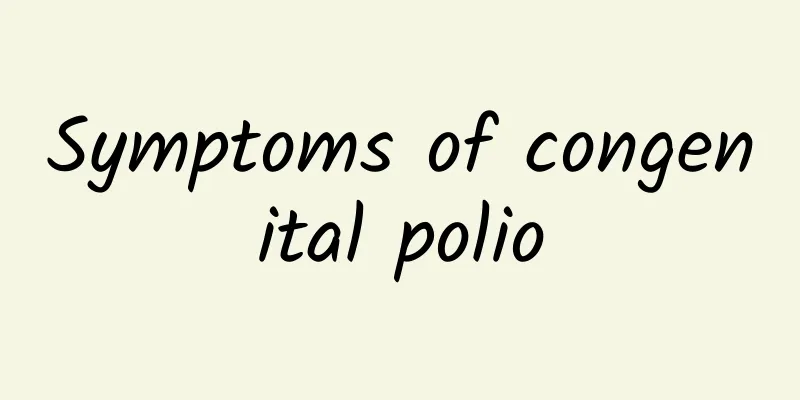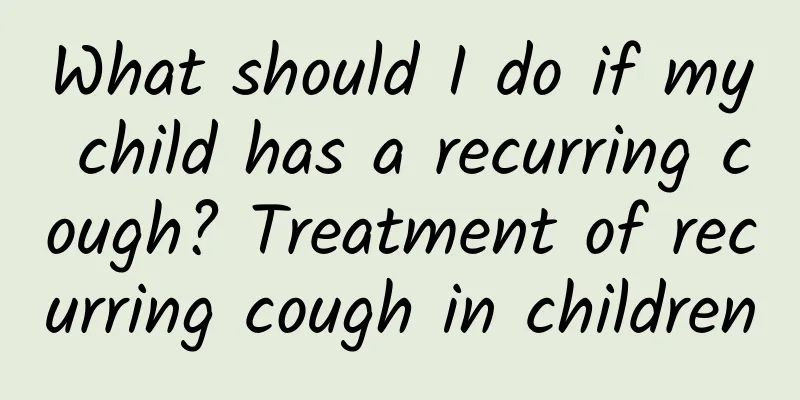Choice of staple food for children with pneumonia

|
What should children with pneumonia eat? During the treatment of children with pneumonia, it is also necessary to make good arrangements for their daily diet, so as to assist the treatment and enable the child to recover faster. Here, we will popularize the dietary tips and dietary therapy for children with pneumonia for parents. Come and learn about it together. Dietary tips for children with pneumonia Ensure adequate energy. Children with pneumonia have a long period of high fever and severe physical exhaustion, so they should be provided with adequate energy, especially high-quality protein such as lean meat, lean poultry, fish, shrimp, eggs, and milk. As long as they are not allergic, they can eat them. Infants and young children aged 0-1 should be fed with sufficient breast milk or formula milk and/or sufficient complementary food. Provide adequate minerals. Acid-base imbalance is a common symptom of pneumonia, so older children should eat more fresh vegetables or fruits to supplement minerals. Dark vegetables are preferred, such as spinach, water spinach, tomatoes, carrots, etc. In addition, eat more foods rich in iron and zinc, such as pork, duck, chicken, etc.; you can also choose high-calcium foods such as dairy products. However, the preparation of meals needs to be easy to digest and absorb, and try to stimulate the baby's appetite. Next, let’s take a look at which recipes are suitable for children with pneumonia. Dietary treatment for pneumonia in children Lily syrup: 60-100g lily, add appropriate amount of sugar, boil in water, and drink. Bamboo juice porridge: Cook 50g of polished rice into porridge. When the porridge is almost done, add 50-100ml of bamboo juice and cook for a while. Eat warm in the morning and evening or in the morning and afternoon. It is used for those who cough up purulent sputum or have occasional unclear consciousness. Fritillaria porridge: first cook porridge with 100g polished rice and appropriate amount of sugar, when the porridge is ready, add 5-10g Fritillaria cirrhosa powder, boil it for two or three times, and eat it warm in the morning and afternoon. It is used for those who cough and spit out sticky phlegm. Sichuan Fritillary and Pear Stewed Pork Lung: 10g Sichuan Fritillary, 2 pears, 250g pork lung, peel the pear and cut into pieces, cut the pork lung into pieces and remove the foam, put them into a casserole with Sichuan Fritillary, add a little rock sugar and an appropriate amount of water, simmer for 3 hours and then take. It is used for those with Yin deficiency and phlegm heat. Perilla frutescens porridge: 15-20g perilla frutescens, mash it into a paste, boil it with water to get the concentrated juice, remove the residue, add 50-100g polished rice and appropriate amount of crystal sugar, cook it into porridge, and take it warm in the morning and evening. It is used for cough and asthma. Garlic porridge: 30g purple garlic, peeled, boiled in boiling water for 10 minutes, then scooped out, put 100g polished rice into the garlic water, cook into porridge, then put the garlic into the porridge, cook for a while, and serve warm in the morning and evening. For patients with pneumonia fungal infection. What should children with pneumonia not eat? Protein diet: Lean meat, fish and eggs are mainly composed of protein. 1 gram of protein absorbs 18 milliliters of water in the body, and the final product of protein metabolism is urea. Children who eat more protein will excrete more urea, and every 300 milligrams of urea excreted will take away at least 20 milliliters of water. Therefore, children with high fever and dehydration should avoid eating high-protein diets. In the later stages of the disease, they can supplement appropriately to improve their physical fitness. Eating foods high in sugar: Sugar is a calorie supplement with a simple function and basically contains no other nutrients. If children with pneumonia eat more sugar, the bactericidal effect of white blood cells in the body will be inhibited. The more sugar is consumed, the more obvious the inhibition will be, which will aggravate the condition. Spicy food: Spicy foods are very irritating and can easily generate heat and damage body fluids. Therefore, children with pneumonia should not add chili oil, pepper, and spicy condiments to their diet. Greasy and heavy food: Children with pneumonia often have low digestive function. If they eat greasy and heavy food, their digestive function will be affected, and the necessary nutrients will not be replenished in time, resulting in reduced resistance to disease. Therefore, they should not eat cod liver oil, pine egg yolk, crab roe, phoenix tail fish, crucian carp roe, and animal offal and other heavy food. If they drink milk, they should remove the upper oil film, and nursing mothers should also eat less greasy food to avoid aggravating the condition. |
<<: What are the dietary taboos for children with pneumonia?
>>: Chinese medicine recipes for children with pneumonia
Recommend
What are the examination items for mumps
The diagnosis of mumps mainly relies on imaging e...
How to diagnose hand, foot and mouth disease
Hand, foot and mouth disease is a common childhoo...
Three major characteristics of breast milk jaundice
Breast milk jaundice refers to jaundice symptoms ...
Is there no cure for adult jaundice at 600?
Adult jaundice of 600μmol/L is usually not hopele...
What examinations should be done for children with diarrhea? Should we pay attention to the hygiene of supplies to prevent diarrhea in children?
Every step of a child's growth makes parents ...
Is infectious jaundice easy to treat?
Infectious jaundice is relatively not serious. Ge...
Can Kidney Disease in Children be Cured?
Can childhood kidney disease be cured? In recent ...
Is it easy to cure diarrhea in children?
Children will often encounter symptoms of pediatr...
What medicine is good for children with bacterial tracheitis and cough?
To treat tracheitis cough caused by bacterial inf...
How to treat influenza in children? Several methods of treating influenza in children
Influenza in children School-age children and ado...
What are the traditional Chinese medicines for treating colds in children?
Chinese medicine prescriptions such as Mahuang Ta...
Treating children's pneumonia: Avoid the three major misunderstandings and eight folk remedies for treating children's pneumonia
Winter is the season when various respiratory dis...
Is minimally invasive surgery for pediatric hernia good? 3 conventional surgeries for treating pediatric hernia
If a child has hernia, it can be treated medicall...
Will the baby's indigestion have a bad-smelling stool? What are the treatment methods for baby's indigestion?
Baby indigestion is the most common digestive tra...
Causes of patent ductus arteriosus in neonates on echocardiography
Patent ductus arteriosus in newborns is a common ...









